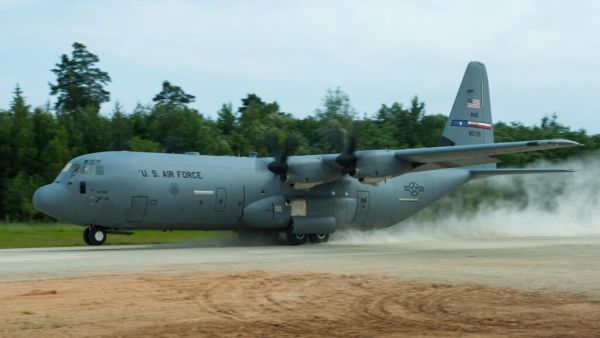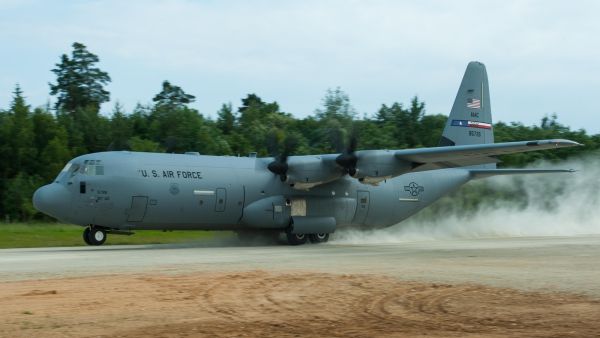According to Greek Mythology, Hercules was a demigod with incredible strength and stamina, capable of amazing feats and renowned throughout ancient Greece and Rome. While we’d never suggest that the C-130 Hercules be granted demi-god status, it has certainly proved to have many of the same attributes as its namesake. First conceived in 1951 and entering service for the United States Air Force (USAF) in 1956, the C-130 can also add longevity to its list of attributes. Incredibly, the Lockheed Martin-produced aircraft is still in production, with the latest Rolls-Royce-powered C-130J variant accounting for 546 of 2,700 C-130s produced as of June 2024.
However, you don’t need to be eagle-eyed to spot one major difference between the Hercules and most other combat aircraft — a lack of jet engines. Unlike most modern military aircraft, the C-130 still uses turboprop engines — a design choice that reflects its mission needs more than its age.
The Hercules isn’t designed for speed or ocean-traversing flights; its role as a short-haul aircraft that’s rugged enough to operate from short, rough airfields means turboprops are simply a better fit. Additionally, propeller-driven aircraft are generally more efficient at lower speeds and altitudes, which are common flight conditions for the Hercules. In the end, fitting the C-130 Hercules with turboprops was a design decision that — like the rest of the aircraft — has stood the test of time.
The C-130 is a legendary workhorse
If you’re moving home and are given a choice between a sleek V8-powered supercar or a lumbering truck with the torque and grunt to transport heavy loads across long distances, which would you choose to help with the move? While the truck definitely lacks the glamor and performance of the supercar, it would certainly be the right choice to get the job done. This echoes the C-130’s role in air forces worldwide. The C-130 is a time-tested masterpiece of making a design fit its purpose. It may not have the sleek lines and stealthy performance of a jet like the F-22 Raptor, but that isn’t the point. Its job is to move people, equipment, and supplies, often into hastily prepared and unpaved airstrips.
From landing on icy airstrips in Antarctica to touching down on dirt runways in war zones, the Hercules isn’t meant to be a thoroughbred; it’s meant to go where others fear to tread. The C-130 can be adapted for dozens of missions, including troop transport, medevac, aerial firefighting, search and rescue, and refueling helicopters mid-air. There was even a gunship variant and a WC-130 hurricane-hunting Hercules. However, longevity isn’t achieved by standing still, and there have been several variants of the C-130 Hercules over the years. Next, we look at some of the changes that have kept the Hercules relevant despite the passing of nearly 70 years.
A look at the C-130’s history
Outwardly, there is little to differentiate between the different C-130 generations. The basic airframe shape has stayed the same, although there is a C-130J-30 variant that stretches the fuselage by 15 feet. However, the engines and propellers have seen substantial upgrades over the years. The C-130A was first delivered to the USAF in December 1956 and was powered by four Allison T56-A-1A or T56-A-9 turboprops, driving three-bladed Aeroproducts propellers. This iteration could carry a payload of 35,000 pounds, and the USAF ordered a total of 219 units.
Allison engines continued to power the Hercules for the next few decades, with the T56-A-7 installed in the C-130E and the T56-A-15 powering the C-130H variant. However, the latest C-130J Hercules has switched from Allison powerplants to Rolls-Royce AE 2100D3 turboprops. Another notable difference introduced with the C-130J was the addition of six-bladed composite propellers. These upgrades, along with the introduction of more advanced avionics, navigation systems, and head-up displays, have helped to keep the Hercules relevant despite its age.
The latest C-130Js can fly at 417 mph at 22,000 feet, whereas the C-130E could only manage 345 mph at 20,00 feet. While how much cargo a Hercules can carry has remained similar across the generations, the aircraft’s range has almost doubled from 1,150 miles for the C-130E to 2,071 miles for the C-130J. The Hercules may not be a Greek God, and it may fly with old-school propellers, but after seven decades of service, this plane has earned its legendary status.






